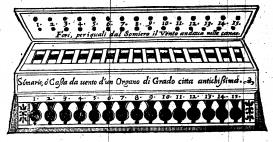In early modern Italy, seminal changes in the concept and structure of polyphony were rooted in a shift of praxis defined by the increasing role of keyboard instruments in composition, teaching, theory, performance, and rehearsal. Complex polyphonic music dating from the first half of the sixteenth century was fundamentally designed around the affordances of group singing. When composers composed polyphony, their conceptual models were dominated by the image of intersubjective singing and devices associated with it (such as the Guidonian hand). Over the subsequent two centuries, however, group singing’s primacy as a model for polyphony waned, as the lute and, later, the keyboard became integral to the compositional process. By the early eighteenth century, it was the keyboard that was most intimately associated with the creation and teaching of polyphonic music. This change of performance model, from group to individual and from voices to fingers, fundamentally altered how musicians worked and, therefore, how they conceptualized and structured their art. Building on anthropological work on the dynamic interplay between the process through which a maker makes an artifact and the final form of that artifact, I show that seventeenth-century polyphonic music reveals the inseparability of style history from technological and cognitive changes in art practice. My book’s case studies cover different amalgamations of vocal polyphony and keyboard playing, including intabulation, the stile antico, early basso continuo, the concertato style, and Nicola Vicentino’s theoretical writings.

Woodcut of a medieval organ fragment owned by music theorist Gioseffo Zarlino in 1588. Source: Gioseffo Zarlino, Sopplimenti musicali (Venice: Francesco dei Franceschi Senese, 1588), Book Eight, 291.
Project
(2019-2020)
Keyboard Playing and the Reconceptualization of Polyphonic Music in Early Modern Italy
- Leon Chisholm
- Cooperation Partners:
- Humboldt Universität zu Berlin
- Collaborative Research Center 980 "Episteme in Motion"
